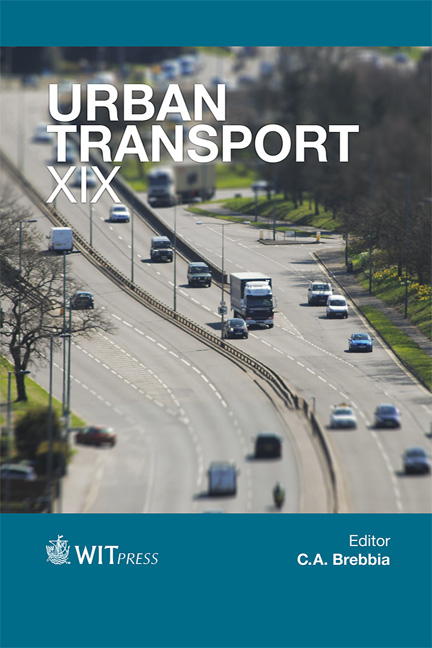Analyzing Transit Service Quality Evolution Using Decision Trees And Gender Segmentation
Price
Free (open access)
Transaction
Volume
130
Pages
11
Page Range
611 - 621
Published
2013
Size
302 kb
Paper DOI
10.2495/UT130491
Copyright
WIT Press
Author(s)
R. de Oña & J. de Oña
Abstract
The analysis of service quality in public transportation has become very popular in the last few years, when transport planners and managers have begun to focus all their efforts on a continuous improvement of the service quality. Knowing the passengers’ perceptions about different characteristics describing the service allows transport managers to decide where they have to apply their actions. However, passengers’ perceptions and requirements about public transport services are very heterogeneous among users, and also over the time. Segmentation is normally carried out in order to reduce this heterogeneity, and with an annually or six-monthly frequency, detailed analysis are performed in order to identify the most significant changes in passengers’ opinions. In this research work, a segmentation based on the gender of passengers is developed, in order to discover and compare the key factors affecting the perceptions of men and women about the quality of service. Data from three consecutive Customer Satisfaction Surveys (2009–2011) developed in the metropolitan transit service of Granada (Spain) are used, and the evolution of the most influence factors for men and women across the years is shown. For this purpose, a novel methodology for the analysis of service quality is presented. Decision Trees, and particularly the CART algorithm, has been applied. This is a non-parametric technique, with no pre-defined underlying relationship between the target (dependent) variable and the predictors (independent variables), which has several advantages over parametric models. The main results shown that for men the most influence variable changes among Safety, Punctuality and Timetable, while for women, the key factor varies among Speed, Frequency, and Timetable. Keywords: service quality, decision trees, CART, heterogeneity, gender segmentation.
Keywords
Keywords: service quality, decision trees, CART, heterogeneity, gender segmentation.





